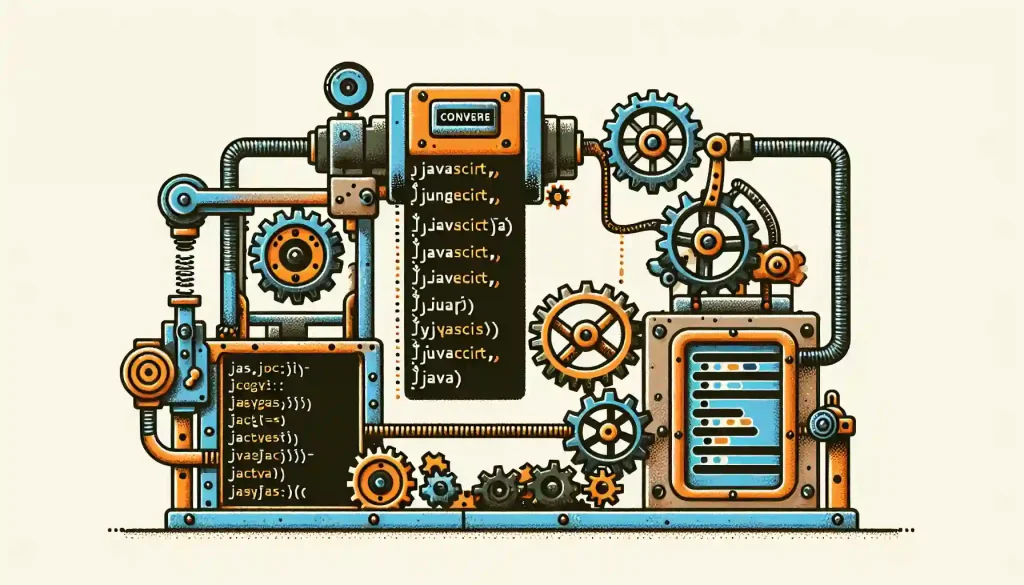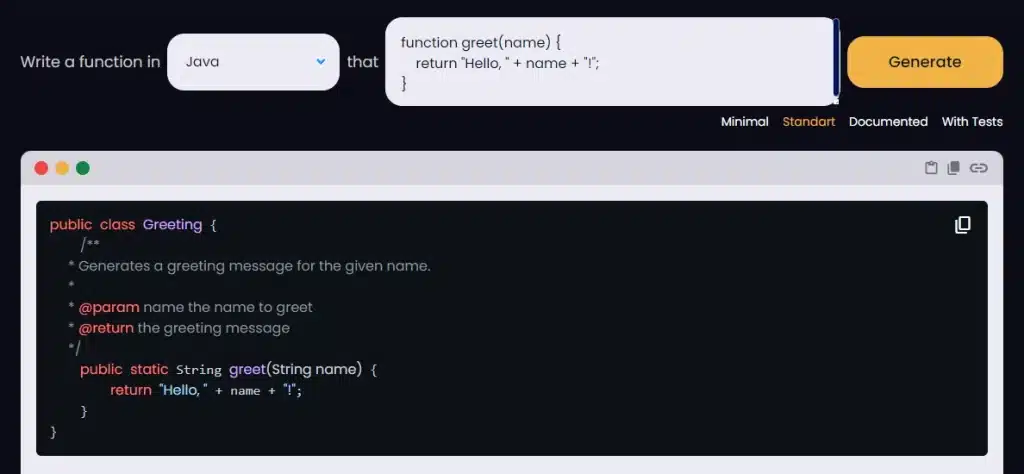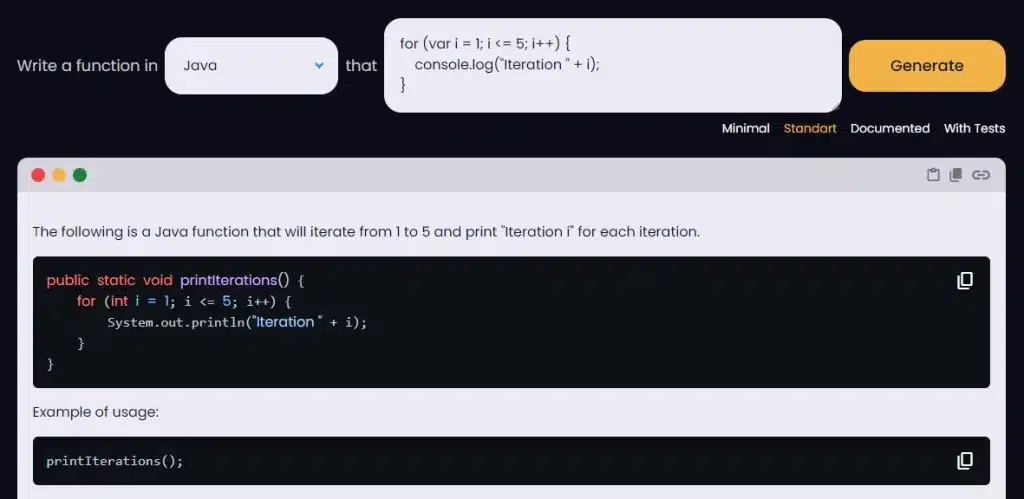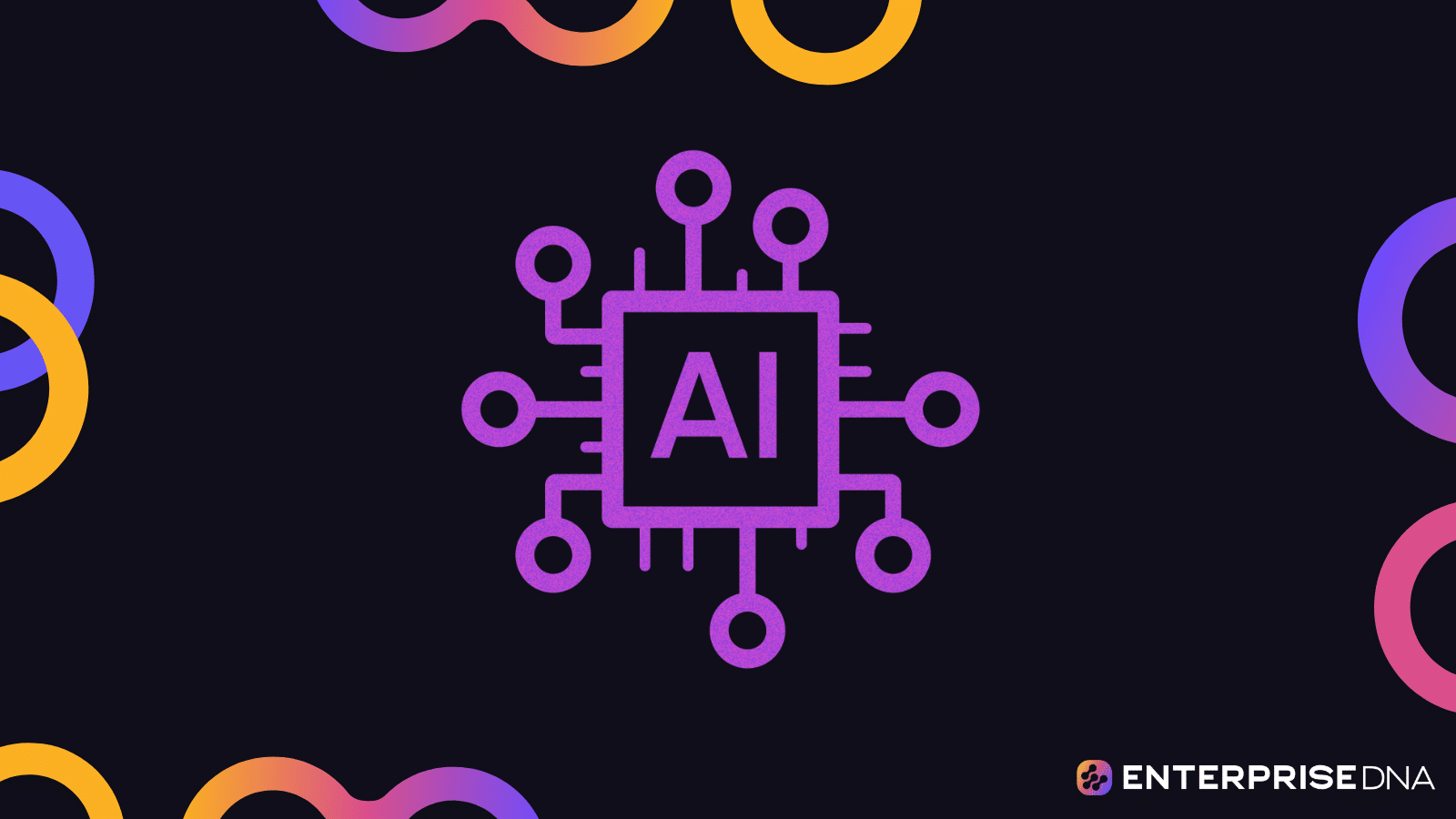So, you want to convert Javascript to Java? Well, you’re in luck. In recent years, artificial intelligence has revolutionized software development.
AI-powered code converting is one of the most exciting recent advancements in the tech community.
These tools utilize an AI-powered engine trained on a vast amount of code to detect patterns, best practices, and subtleties of both languages, enabling it to understand the syntax, semantics, and idioms of JavaScript and Java.
This powerful tool allows you to seamlessly translate their JavaScript into Java, saving time and effort while ensuring their applications are compatible with multiple platforms.
In this article, we’ll look at this game-changing technology and explore how it can transform how you write and deploy code.
Let’s dive in!
Overview of JavaScript to Java Converter

A JS-to-Java converter is vital for working in front-end web development (where JavaScript is prevalent) and Java-based server-side applications.
This converter automates translating JavaScript code into Java, allowing for code reuse and cross-platform compatibility.
4 Main Advantages of Using a JS to Java Converter
Code Reusability: Converters enable the reuse of JS code in Java applications, saving time and effort.
Cross-Platform Compatibility: They facilitate the integration of JavaScript logic into Java, ensuring consistency across different parts of an application.
Streamlined Development: You can work in your preferred language, enhancing productivity and code maintainability.
Error Reduction: Converters help minimize translation errors, ensuring smoother integration.
Next up, let’s take a look at how to use it.
How to Use a JavaScript to Java Converter

We’ll use the EnterpriseDNA code mentor for the following examples and demonstrate its ability to translate different JS code snippets into Java.
Example 1: Basic Function Conversion
JavaScript Code:
function greet(name) {
return "Hello, " + name + "!";
}Converted Java:

This example demonstrates the conversion of an essential JavaScript function into Java. In JavaScript, the function greet concatenates a greeting with a name.
The Java equivalent involves creating a method inside a class. The greet method in Java returns the concatenated string, which we can test in the primary method.
Next, let’s examine Example 2, focusing on the fundamentals of variable declaration and usage.
Example 2: Variable Declaration and Usage
JavaScript Code:
var message = "Welcome";
console.log(message);Converted Java:

Here, we see how a simple JavaScript variable declaration and usage are translated into Java.
The JavaScript code declares a variable message and logs it to the console. In Java, the variable is displayed within the primary method, and we use System.out.println to output the message.
Let’s delve into the next example, exploring the intricacies of conditional statements.
Example 3: Conditional Statements
JavaScript Code:
if (age >= 18) {
console.log("You are an adult.");
} else {
console.log("You are a minor.");
}Converted Java:

This example shows the conversion of a JavaScript conditional statement into Java. The JS code checks if the age is 18 or above to determine adult or minor status. The Java version does the same, with the age value set inside the primary method.
Moving forward, let’s dive into an example exploring the complexities of looping constructs.
Example 4: Looping Constructs
JavaScript Code:
for (var i = 1; i <= 5; i++) {
console.log("Iteration " + i);
}Converted Java:

The code mentor handles transforming a JS loop into a Java loop. The code uses a for loop to print messages for each iteration.
The Java version uses a similar for-loop structure, outputting the iteration number to the console.
Next, let’s look at an example focusing on handling arrays.
Example 5: Handling Arrays
JavaScript Code:
var numbers = [1, 2, 3, 4, 5]; console.log(numbers.length);Converted Java:

This example illustrates the conversion of JS array handling into Java. The array numbers are logged to the console to display their length.
In Java, the array is declared with a specific type (int[]), and its length is accessed similarly.
Finally, let’s reflect on some of the main takeaways.
Final Thoughts

JavaScript to Java converters allows you to work with your preferred language while ensuring code compatibility and reuse.
These tools are especially valuable when front-end and back-end development are closely integrated.
As technology evolves, expect further advancements in JS to Java conversion tools, enabling even smoother cross-language development.
Discover how we’ve been dealing with data, latest video below:
Frequently Asked Questions
What is a JavaScript-to-Java converter?
A JS-to-Java converter is a software tool that automates translating JS code into Java code. Some advanced converters use artificial intelligence (AI) algorithms to enhance conversion.
Why would I need to convert JavaScript code to Java?
You may need to convert JS to Java for various reasons, including integrating client-side and server-side logic, code reusability, and maintaining consistency across different parts of an application. AI-powered converters can offer more precise translations in complex scenarios.
What are the advantages of using a JS-to-Java converter?
Advantages include code reusability, cross-platform compatibility, streamlined development, and reduced errors in the translation process. AI-powered converters excel in handling intricate JavaScript code and improving translation accuracy.
Are there limitations to using a converter?
While converters are valuable tools, they may have limitations in handling complex JS features or libraries. Manual adjustments may be necessary in such cases. AI-powered converters are designed to address some of these limitations.
How do I choose the right JS-to-Java converter?
Consider factors like compatibility with your JavaScript and Java versions, community support, feature set, ease of use, and the converter’s ability to handle the complexity of your code. AI-powered converters may provide more advanced translation capabilities.
Can I customize the converted Java code?
Yes, you can customize the converted Java code as needed. The converted code serves as a starting point that you can modify to fit your specific requirements. AI-powered converters often produce highly customizable code.
Are there any risks associated with using a converter?
The primary risk is potential errors in the converted code. Rigorous testing and validation are essential to ensure your Java application’s translated code functions correctly. AI-powered converters can reduce the risk of errors in complex conversions.
How do AI-powered converters improve the conversion process?
AI-powered converters use advanced algorithms to recognize and translate complex JavaScript patterns into Java intelligently. They excel in handling intricate code structures and optimizing the conversion for accuracy and efficiency.
Can AI-powered converters handle JavaScript libraries and frameworks?
AI-powered converters may offer improved support for popular JS libraries and frameworks due to their advanced pattern recognition capabilities. However, support for less standard or highly specialized libraries may require manual intervention.
Can I convert Java code back to JavaScript using the same converter?
Converting Java code back to JavaScript is typically more challenging due to language differences. While some tools attempt to perform such conversions, they may not be as straightforward or accurate as JS to Java converters, especially AI-powered ones.











